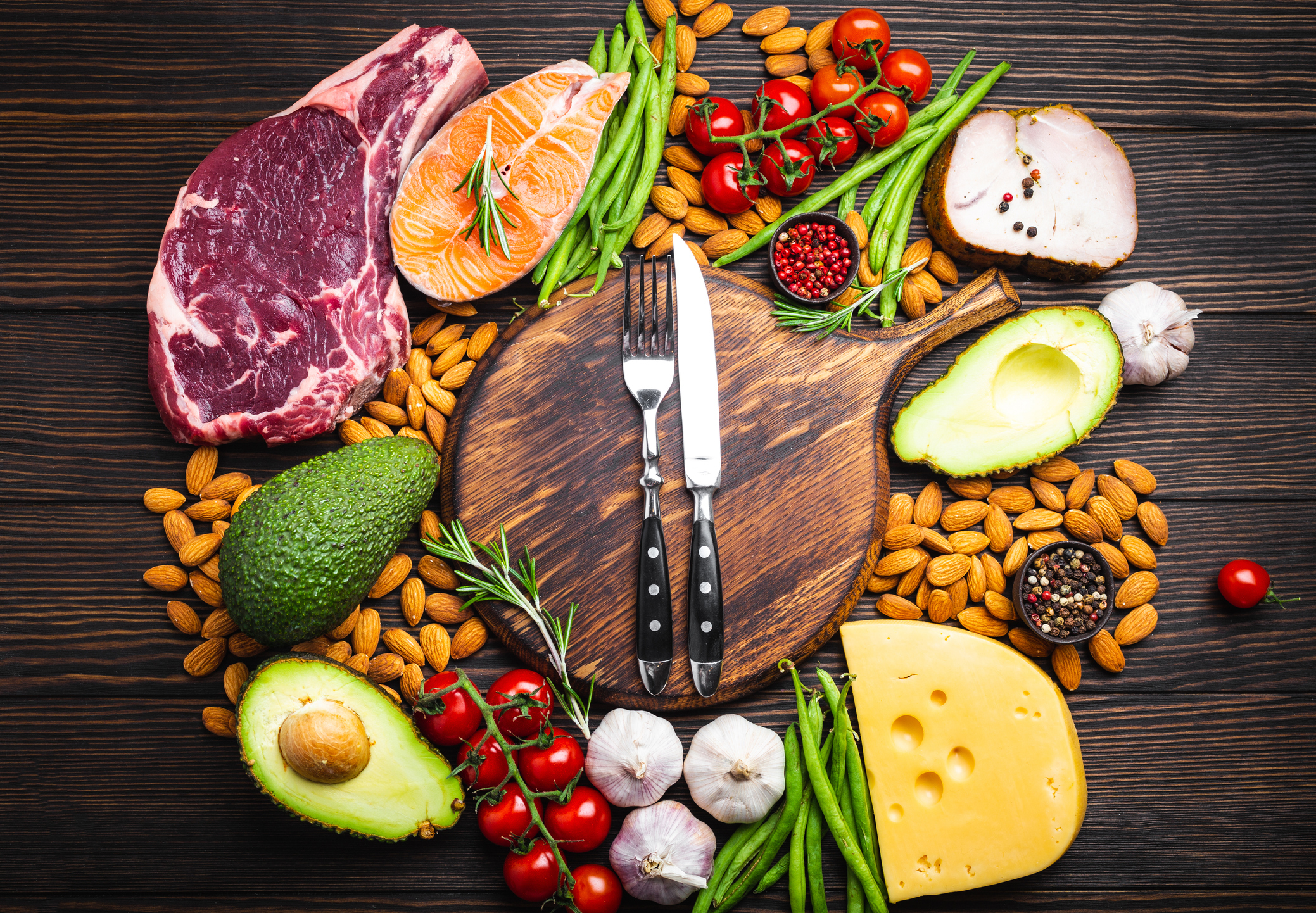
What is the Lazy Keto Diet?
The lazy keto diet is a more flexible version of the traditional low carb, high fat keto diet, where just 5 to 10 percent of your total macronutrient comes from carbs, 15 to 20 percent comes from protein and 60 to 75 percent comes from fat.[1] The lazy keto diet simplifies the traditional keto diet by focusing on counting grams of Net Carbs instead of also tracking grams of protein, fat and calories. As with the keto diet, the goal of the lazy keto diet is to limit your intake of Net Carbs to between 20 and 50 grams a day. Sound familiar? This flexible and sustainable version of the keto diet is exactly what you do with Atkins 20 (the original low carb ketogenic diet) and Atkins 40.
While some say the lazy keto diet may not put you into ketosis because you might eat too much protein (especially if you’re not tracking how much protein you’re eating), with Atkins, you eat optimal amounts of protein, but not too much. Stick with three 4- to 6-ounce servings of protein a day, and you can achieve ketosis with Atkins 20 and Atkins 40. And even if you are not in actual ketosis all the time, you’re still turning your metabolism into one that burns fat for fuel, instead of glucose from carbs, which means you’re achieving all the fat-burning and energy-boosting benefits while keeping your blood sugar level in check.
How To “Eyeball” Protein Portions
Calculating how much protein you eat is also simple. There’s no need to count calories or grams or weigh your food. Just use these visual comparisons, and soon you’ll find it’s quite easy to “eyeball” how much protein you need at each meal:
FOOD VISUAL
|
1 ounce meat, poultry, tofu, etc. |
Small matchbox/remote car key |
|
3 ounces meat, poultry, tofu, etc. |
Deck of cards/cell phone |
|
8 ounces meat, poultry, tofu, etc. |
Slim paperback book |
|
3 ounces fish |
Checkbook |
|
1 ounce hard cheese |
Four dice |
What is the Dirty Keto Diet?
The dirty keto diet still involves sticking with 20 to 50 grams of Net Carbs a day and has the same macronutrient breakdown of the original keto diet. But the dirty keto diet is for people who want to achieve ketosis but don’t want to deal with meal planning or prep. In other words, it doesn’t matter what kind of food you eat, as long as it’s low in carbs and high in fat. The majority of your food could easily come from fast food or other convenient options (pork rinds, anyone?). Dinner may involve noshing on a double bacon cheeseburger, minus the bun, instead of a salad bursting with foundation vegetables and topped with a grilled steak and drizzled with home-made vinaigrette.
While cruising through the drive-through is perfectly acceptable at times and a convenient option when you’re on the go (I have plenty of low carb and keto-friendly tips for eating fast food here), if the majority of your food comes from fast food restaurants, even if they are low in carbs and higher in fat, these choices may have lower quality ingredients, plus you don’t get the benefit of the vitamins and minerals you get from fresh whole foods.
No matter which way you choose to “do keto”, when you lower your carb intake, it’s more important than ever to focus on fiber-rich (and filling) vegetables, low-glycemic fruits such as berries, full-fat dairy, and nuts and seeds. Choosing the highest quality high fiber carbs and other whole foods will help you control your hunger, calm your cravings, stabilize your blood sugar, lose weight and improve your health.
With Atkins 20 and Atkins 40, you can naturally incorporate the lazy keto diet since it focuses on counting grams of Net Carbs, and I won’t hold it against you if you have the occasional day of dirty keto.
[1] As always, consult a physician before beginning any new diet or fitness routine.